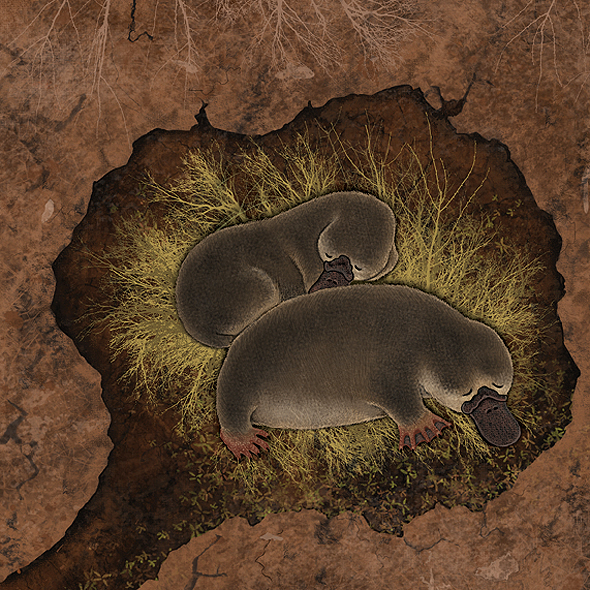
Apparently, to find out if the stranger you just invited in from the pouring rain is truly a real princess, you must hide a pea under layer upon layer of mattresses and feather beds and wait until the next morning to see if she noticed it.
Who knew?
I was a big fan of Hans Christian Andersen when I was a kid. That could be why the first thing that came to my mind when I heard the word “layer” is the bed that the very bruised, extremely sleep-deprived princess in “The Princess and the Pea” slept in. Either that or the way I have to dress, living in the ever-changing weather of Southern California these days.
……………………………………………………………………………………………………………………..
So, killing two birds with one stone, I threw together a sketch for Illustration Friday and an upcoming celebration we’re having, over at the Doodle Diner, of “Tell A Fairy Tale Day” on Saturday, February 26th. I’m hoping to get this all finalized and colorized by then! Also looking forward to seeing what my fellow Doodle Diners come up with!








Whenever she could, Princess Lentil would play.
She'd layer on clothing and take off the day.
Because "Princessing" can be such a hassle
She'd rather be outdoors than back in the castle.
Shhh…. Under layers of earth the platypus is sleeping.

Platypus spend around half their day resting in short, oval-shaped burrows of about 3 to 8 m long that they dig into earth banks around rivers, lakes or streams. They often have multiple burrows scattered along their home range. Females also dig elaborate nesting burrows around 20 m long with multiple chambers and earth plugs which they share with their unweaned young. The burrow is expertly hidden from predators. You might walk right by it and never notice it.
 A sneak peek of my newly illustrated book coming out in the spring of 2011.
A sneak peek of my newly illustrated book coming out in the spring of 2011.

OK, you’ve narrowed down your story to a plot template and you know what characters, events, settings are implied by the story you are thinking about and the plot template. You know some of the pitfalls of plots. Now what?
It think this is the hardest part of plotting a novel, going from generalities to particulars, actually choosing and writing scenes. But you have to make a start, so let’s get to it.
Working Methods
Plan or write. Plan first or write and see where it goes? Oh, the perennial question! I’ll dodge it, though, by saying you must follow your own bent. Find your own working methods and habits of working that produce pages that lead to a full draft of a novel.
However! IF you usually just start in writing, TRY planning each scene. IF you usually plan each scene, TRY just jumping into the writing. Every once in a while, it’s great to break your pattern of working and see what happens. Shake yourself up! (I suggested this once at a national conference and got several notes later that this was the best advice the writers had ever taken, the resulting novel was the best she had written – so try it!) If the results are disappointing, you can always go back to your original methods of writing your novel.
It just depends. But I just avoided the question again of what to write first, second, third, etc. And here’s where the answers get frustrating: it just depends. Not knowing your genre, audience, voice, characters, setting, plot template – I simply can’t say. But I can give general guidelines.
Try to write in scenes. A scene is a unit of story that is self-contained, in that it has a beginning, middle and end; it has a goal and a resolution (either tragedy or success); it plays a role in the story. Writing in scenes adds tension to a story and keeps the writing focused. (MUST you write in scenes? No. Yes. It depends. If you’ve never done it, try it!) This is easy advice to ignore; I did it for many years and my writing suffered. More on the anatomy of scenes tomorrow.
Working Attitudes
 Don’t be boring! Try to build in surprises. Bored readers won’t finish your story.
Don’t be boring! Try to build in surprises. Bored readers won’t finish your story.
- Scene cuts. With each new scene or chapter, stop and think about what is expected next. Don’t do it. Instead, jump ahead a bit more than expected.
- Leap-frog story lines. Or leave a character in the middle of a crisis and leap frog to another character where you get us involved emotionally, before leap-frogging back to the first story line.
- Ground your novel in physical, sensory details. In the scene’s opening, set the scene, especially the emotional tone. Do this by careful selection of sensory details and the specific words you use to describe what is happening.
- Focus on emotions. Always remember to make us care about a character before springing danger.
Don’t be cliched! Brainstorm like crazy. Before you start a scene/chapter, list ten possible events and sequence of events. Yes. Ten. Not nine. Not eight. Ten. Force yourself to go beyond the cliche that you thought of first and go on to something different, more striking and more original.
Plot Complications and SubPlots
Depending on what source you consult, you may hear a couple terms used concerning subplots and plot layers, or extra complications for the main character. These work for me.
- Plot layer. A secondary problem given to the s







 Don’t be boring! Try to build in surprises. Bored readers won’t finish your story.
Don’t be boring! Try to build in surprises. Bored readers won’t finish your story.
fab. look forward to the colour version although I really like the amount of tones you used here.
beautiful drawing style and stylization of characters and forms!
I love it. Poor princess, she looks so tired
oh I felt like a princess when I lived in southern cal, but I think it was just our lumpy mattress. great illo, can’t wait to see it colourized!
I adore this! Her expression, your depth of line quality and the energy! Double Wow!
great sketch! I did the same subject – great minds, natch…
I love your style (and frustrated princesse too. ).
).
Opps! The pea is out, have a nice sleep now, poor little Princess!
I enjoy this B/W version very much, wait for the color version to double up my joy!
Great completeness of scene!!! Nice detailing…
Love this. It is very arty and original.